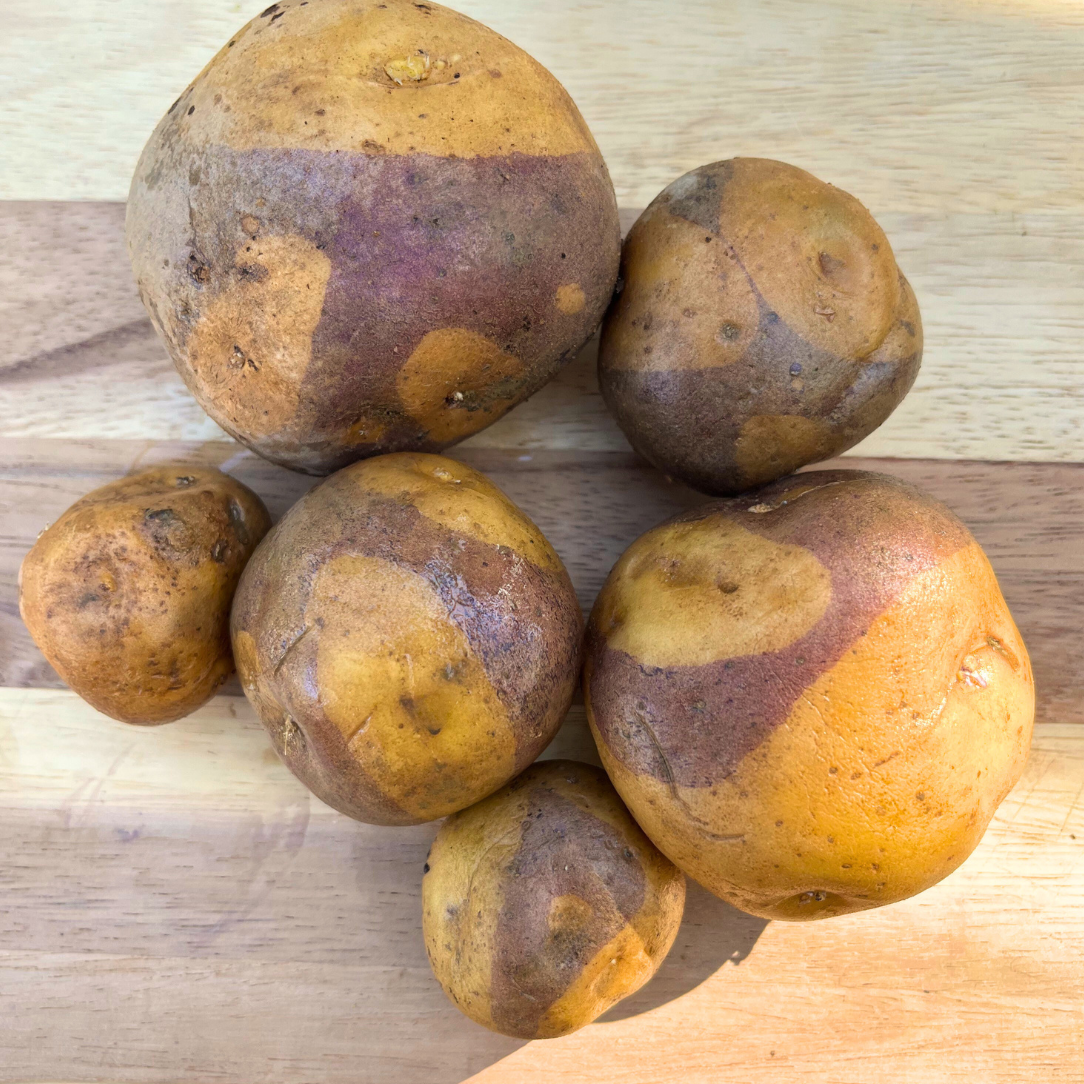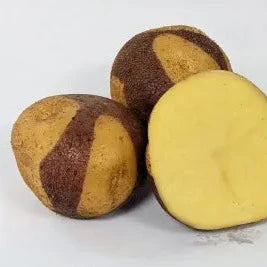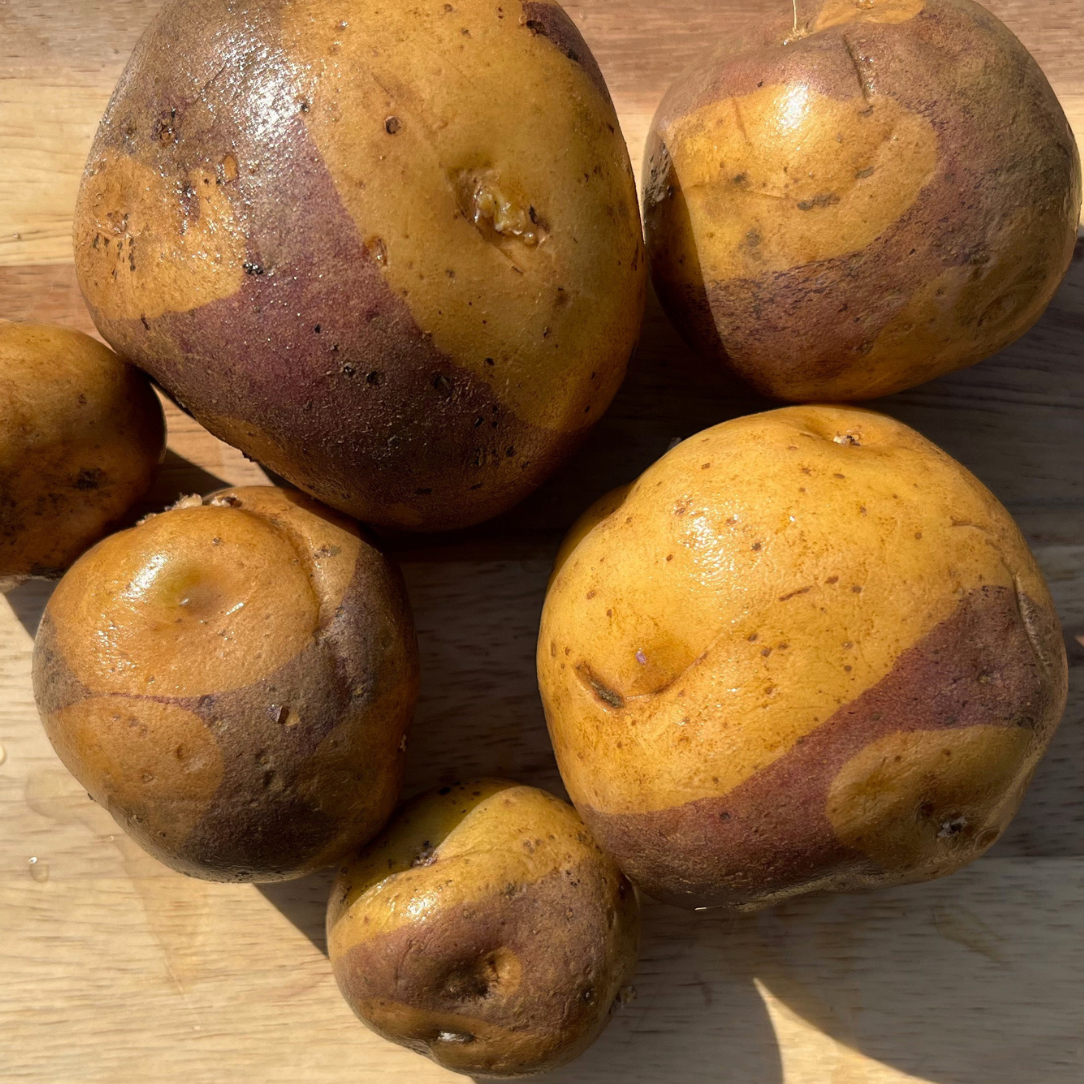Masquerade Potato
Solanum tuberosum
Stunning, unusual, dual-colored round tubers
Mid-season potato, with delightful mottled purple and gold skin and creamy yellow flesh - bound to make you smile, and maybe even laugh! Tubers are small and rounded, a little bigger than golf ball size, and frequently contain a surprise of subtle variegated purple and yellow flesh at their core. The flavor is creamy, slightly nutty, and substantial, with a pleasing level of starchiness. Their size and taste make them a great choice for roasting or for salads. PVP.
Does Not Ship Internationally.
Couldn't load pickup availability
Growing instructions
Plant potatoes in spring when the soil has warmed and can be worked well - anytime from about 2 weeks before your last frost date until early summer, as long as there are about 90 days of the growing season left. Potatoes require full sun and plentiful water, and do best in loose,well-drained soil that is kept weed-free. They benefit from regular applications of an organic fertilizer throughout the growing season, and side dressing with a good compost as the plants grow.
Prep potatoes for planting by setting them in a room temperature environment where they will be exposed to medium light for about a week before your planting date. A day or two before planting, any potatoes larger than egg size can be cut into smaller pieces with a sharp, clean knife. Each cut segment should contain 1-2 eyes or buds, and should be no smaller than 2 inches square. After cutting, allow the potatoes to dry so that they form a thick callous over the cut surfaces, which will help to prevent them from rotting after planting.
There are a few different methods of planting potatoes, but most opt for growing them in rows by planting in trenches. Trenches should be dug to a depth of 6-8 inches, and potato pieces placed eye side up at the bottom of the trench and covered with only 4 inches of soil to begin. In a few weeks, as the plants grow, fill in the rest of the trench so that only 3-4 inches of foliage are exposed. "Hill" the plants again in another 2-3 weeks by mounding soil around the base of the plants. Hilling prevents the newly forming tubers from sunburn and greening by keeping them covered, and provides more soil space for tubers to form in, thus maximizing your harvest.
Another potato planting method that many with space constraints prefer is to plant potatoes in large grow bags, such as our 10 gallon Recycled Fabric Planters. To grow in bags, one would simply roll the top of the bag down, forming a cuff, until you've adjusted the height of the bag to about 7". Fill the bag with soil to about 4" and place your potato pieces on the surface, eye side up, then cover with another 3" of soil. A 10-gallon size bag can accommodate 3-5 evenly spaced pieces/plants. As the plants grow, unroll the bag slightly and add about 4" of soil, so that only 3-4 inches of foliage are left exposed. Keep repeating this process until the bag is full.
Tend to your potatoes throughout the season by keeping them weed-free and the soil evenly moist, particularly while the plants are flowering. When the foliage starts to die back and yellow, discontinue watering to allow the potatoes to begin to cure and prepare them for harvest.
Harvest potatoes 2-3 weeks after the foliage has died back, by gently turning them up from the soil with a fork (hands are just as easy in a grow bag!). If storing your potatoes, allow them to cure, unwashed, in a dry, protected area for 2-3 days before moving them to a root cellar or pantry.
Product Details
| Days to Maturity | 80-90 |
|---|---|
| Width at Maturity | 10 inches |
| Height at Maturity | 24 inches |
| Sun Conditions | Full Sun (8+ Hours Sun) |
| Planting Depth | 4 inches |
| Row Spacing | 36 inches |
| Plant Spacing | 6-12 inches |
Special shipping
Potato tubers ship from early April through June 1st, sequentially in the order received. If you purchase seeds and tubers at the same time anytime from January until the ship date , you will receive two shipments - a prompt shipment of seeds and a later shipment of tubers - and the shipping fees shown at checkout will take this second delivery into account. This product does not ship internationally.

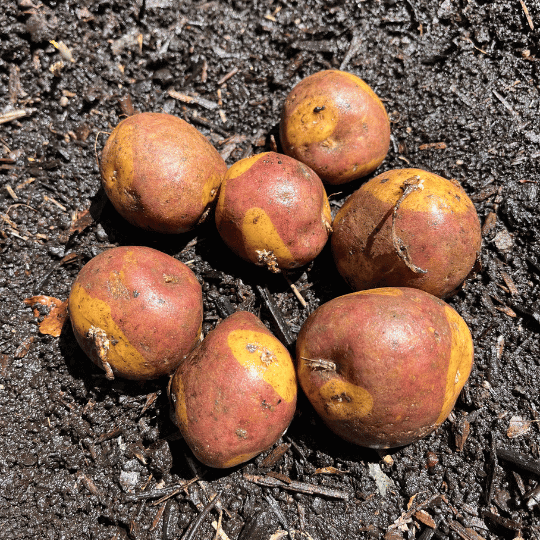
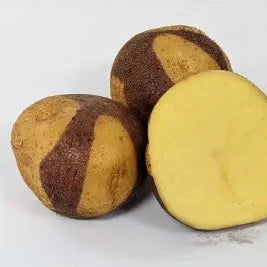
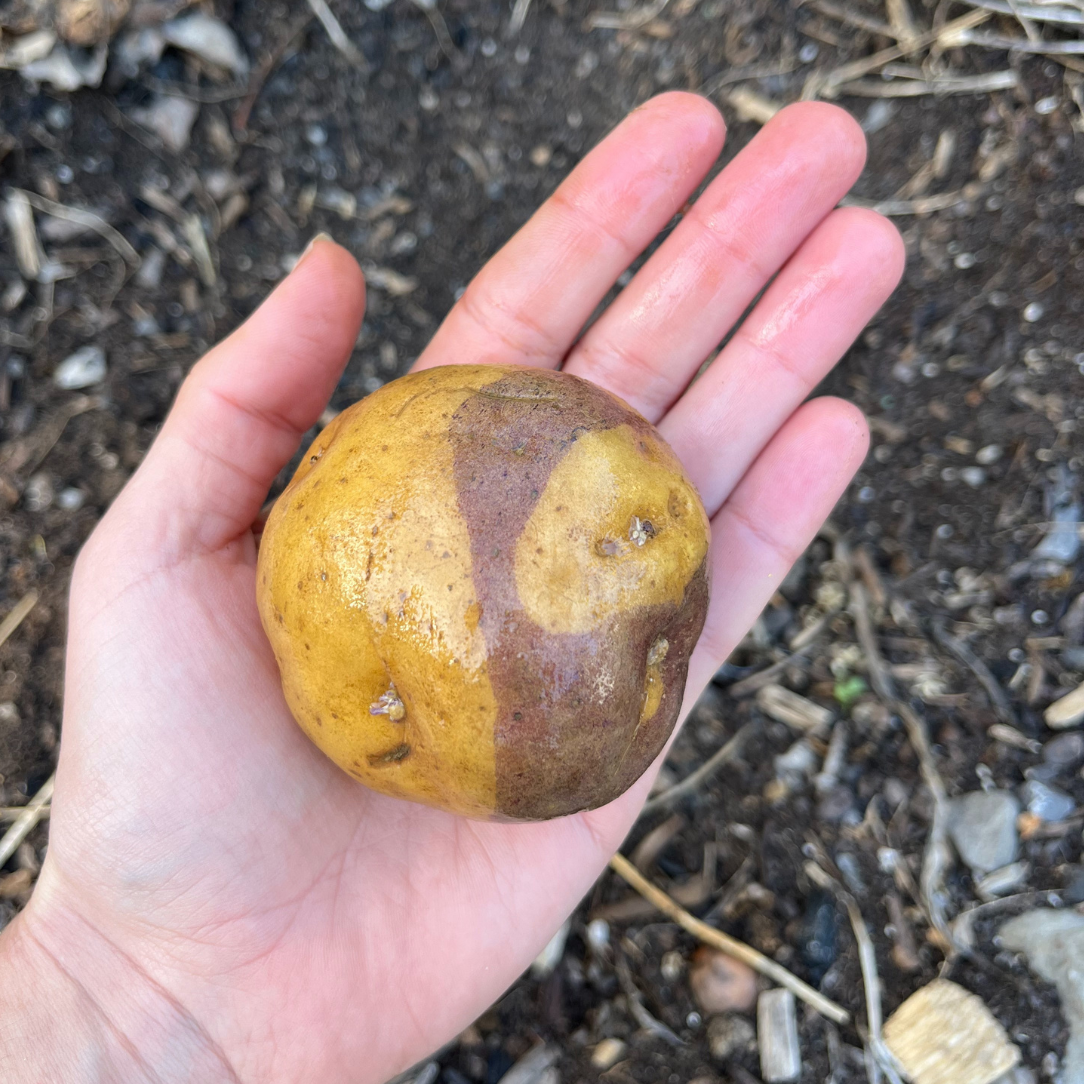
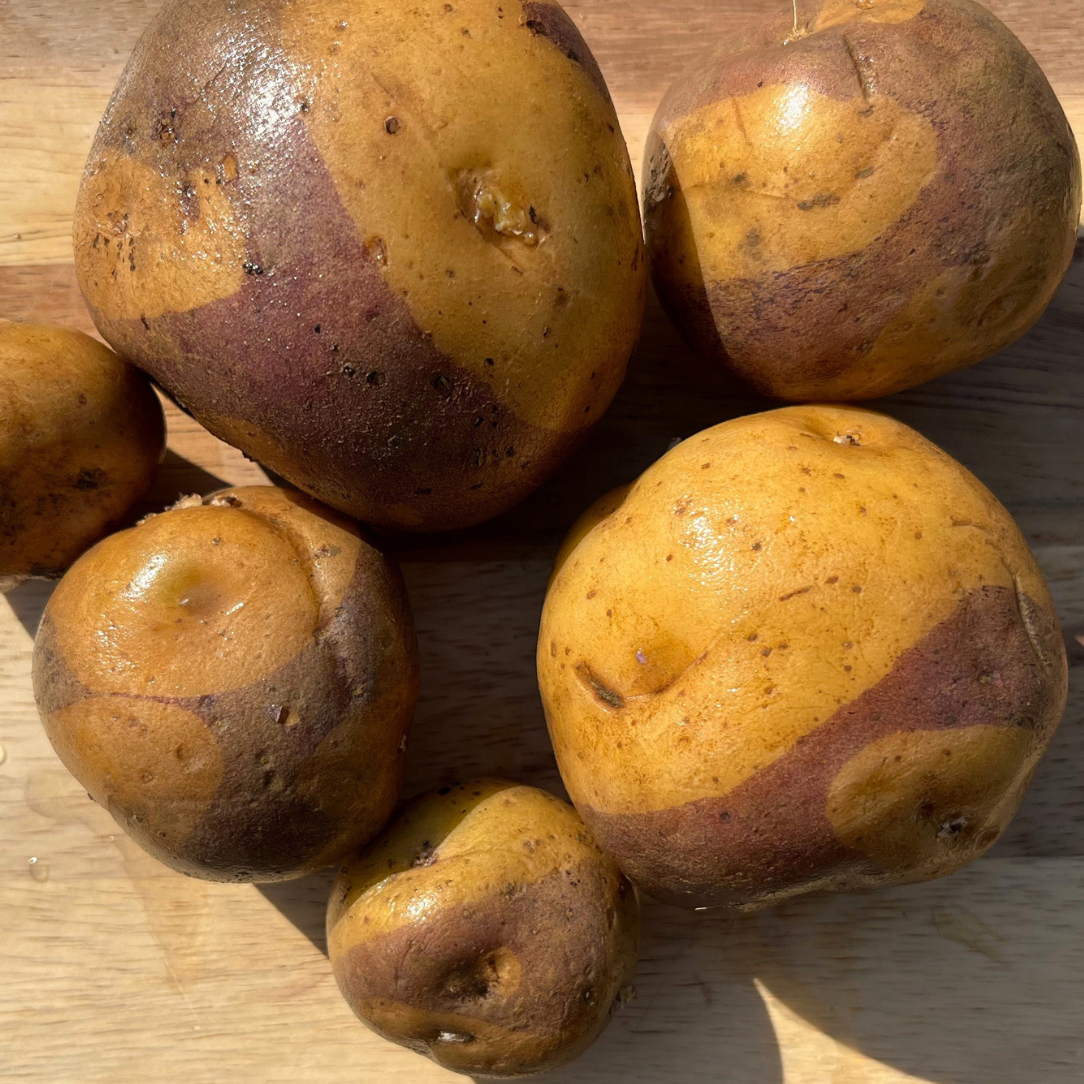

Masquerade Potato
- Regular price
-
$9.99 - Regular price
-
- Sale price
-
$9.99


